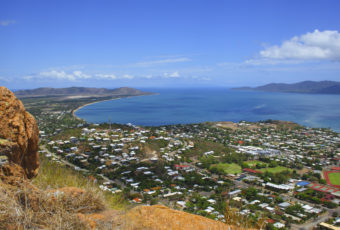Sydney geosciences professor talks about disaster response
In 2010, a tsunami generated by an earthquake in Chile led to much of Australia’s east coast being put on a tsunami alert.
“The detection and warning systems all operated perfectly but what didn’t function was people’s response—with hundreds, possibly thousands, of people flocking to beaches to witness the arriving tsunami,” said Professor Dale Dominey-Howes, from the University of Sydney’s School of Geosciences.

The incident perfectly illustrates some of the complexities of responding to natural hazards and their associated disasters, including how our perception of the risk influences our response.
Last month, Professor Dominey-Howes presented “Planet Terror: Is Earth Becoming More Dangerous?” at a Sydney Science Forum where they discussed what people can we do about preparing for, and responding to, natural disasters.
Professor Dominey-Howes leads the university’s Hazards Research Group in examining some of the major types of natural hazards such as earthquakes, volcanoes, floods, tropical cyclones, epidemics and even asteroid impacts with the Earth.
“Understanding where, when, how and why natural hazards and disasters occur is an essential building block for supporting the ‘tool box of safety risk management’ used by our emergency services and governments,” said Professor Dominey-Howes.
“But how individuals, families, communities, governments and businesses all collaborate in the preparation and response parts of the disaster cycle is as important to successful disaster management as informing and educating people about a threat.”
For us to improve our disaster resilience we need to recognise that emergency and government services cannot work in isolation, Professor Dominey-Howes explains.
From individuals to local government to the life support utilities that support our modern society—disaster awareness and the ability to work in partnership are crucial.
“Individuals and families need to take personal responsibility—’safety starts with self’ as I put it. To help people do that, outreach and education of the public has to be appropriate, especially for those who are most vulnerable,” said the School of Geosciences professor.
“Physically and economically we are all at potential risk from natural hazards but some individuals, communities and societies are more at risk than others and sustain greater losses following natural hazard events and their associated disasters.
“That vulnerability might be because of location or because they are socially isolated, physically challenged or less able to access education materials. Taking that into account is part of successful disaster management,” said Professor Dominey-Howes.
Sydney School of Geosciences
Part of the Faculty of Science, School of Geosciences at the University of Sydney focuses on the three GEOs the disciplines in geoscience form a broad spectrum of knowledge about the Earth.
Geography is the study of Earth as the home of people. It addresses human-environmental relations, the resulting spatial organization of human activity, as well as interactions with the physical environment, its resources and their geological determinants.
Geology and geophysics investigates these determinants, from the Earth’s origins and earliest evolution, through its four and a half billion-year history, to the dynamics of how it is currently evolving.
- Master of Marine Science and Management;
- Master of Environmental Science and Law; and
- Master of Science in Environmental Science.
The School of Geosciences also contributes to teaching within the Master of Human Rights, Master of Sustainability and the Master of Development Studies.
*

































Ask A Question
Ask us about your program of interest, or if you have a question about our services.
CONTACT US TODAY